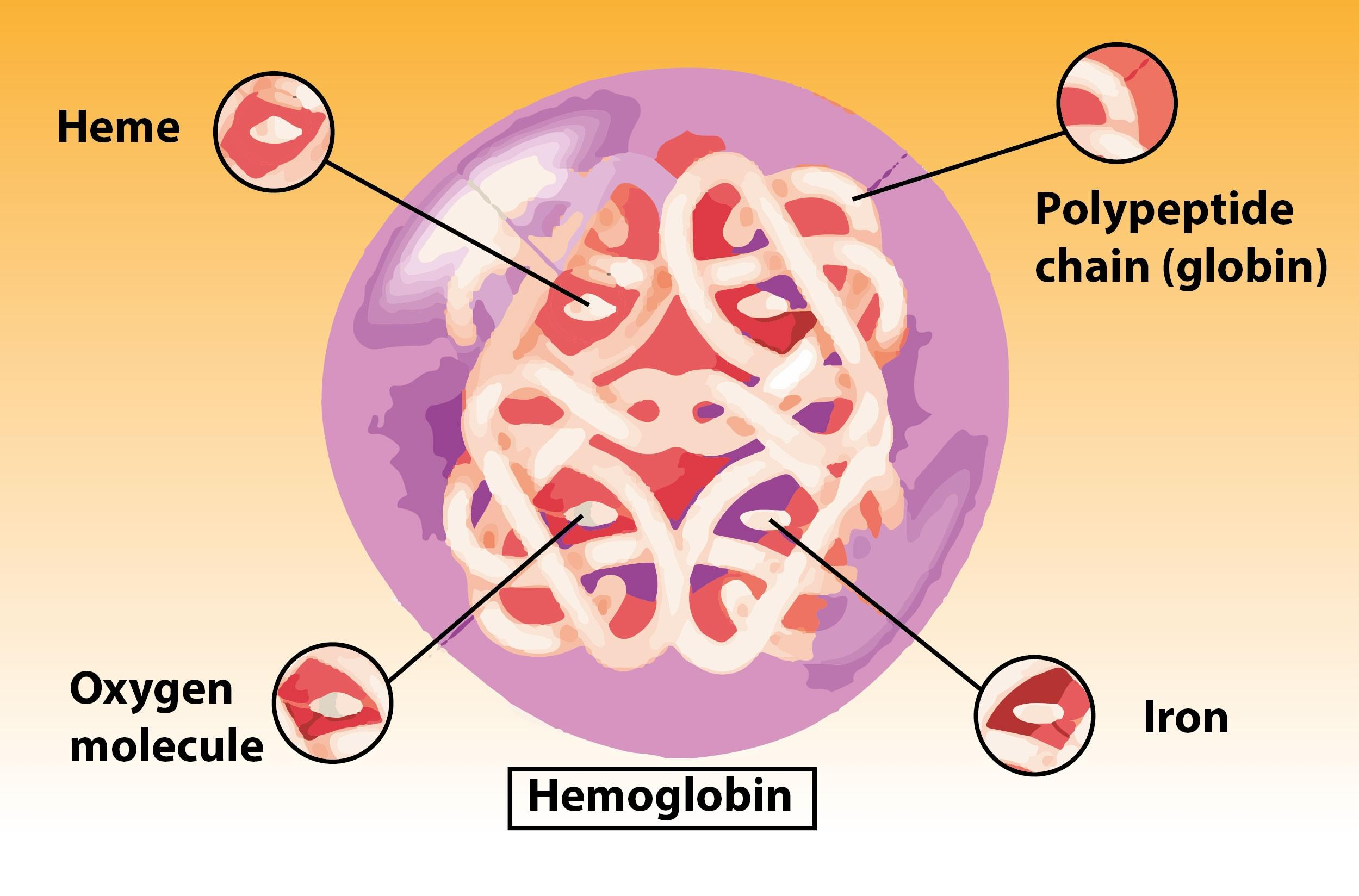
What is hemoglobin?
(a) Main component of RBCs
(b) Iron- containing protein
(c) Transports oxygen
(d) All of the above
Answer
489k+ views
Hint: Hemoglobin is associated with the movement of many gases inside the body. Haemoglobin is responsible for the oxygen capacity of the blood and contains an important metal that also helps in providing red color to the blood.
Complete answer:
RBCs present in the blood contain hemoglobin abbreviated as Hb. In blood, hemoglobin is responsible for carrying oxygen from the respiratory organs of the body. After that, it then releases the oxygen to allow aerobic respiration so that the body may gain the energy required for the proper functioning of the organs and the organism and hence support the process of metabolism. The amount of hemoglobin in the blood of a healthy individual is about 12 to 20 grams in every blood of 100ml. Globulin is surrounded by four heme or iron- containing groups of makeup hemoglobin molecules and ultimately gives it a tetrahedral structure.
Additional Information:
- It is the iron atom in the hemoglobin molecule which is responsible for binding the oxygen while transportation from the respiratory organs to the tissues of the body.

- The heme group which is responsible for occupying
- Hemoglobin is also responsible for the transportation of carbon dioxide from the tissues to the respiratory organs and while transporting the hemoglobin combined with the carbon dioxide molecules is termed as carbaminohemoglobin.
- Molecules of mammalian hemoglobin can carry up to four molecules of oxygen at a time.
So, the correct option is, ”All of the above”.
Note:
- The oxygen-binding capacity of a hemoglobin molecule is 1.34 ml of oxygen per gram.
- Proteins in the mammalian body are responsible for about 96% of the dry contained in RBC and 35% of total content or the wet weight.
Complete answer:
RBCs present in the blood contain hemoglobin abbreviated as Hb. In blood, hemoglobin is responsible for carrying oxygen from the respiratory organs of the body. After that, it then releases the oxygen to allow aerobic respiration so that the body may gain the energy required for the proper functioning of the organs and the organism and hence support the process of metabolism. The amount of hemoglobin in the blood of a healthy individual is about 12 to 20 grams in every blood of 100ml. Globulin is surrounded by four heme or iron- containing groups of makeup hemoglobin molecules and ultimately gives it a tetrahedral structure.
Additional Information:
- It is the iron atom in the hemoglobin molecule which is responsible for binding the oxygen while transportation from the respiratory organs to the tissues of the body.

- The heme group which is responsible for occupying
- Hemoglobin is also responsible for the transportation of carbon dioxide from the tissues to the respiratory organs and while transporting the hemoglobin combined with the carbon dioxide molecules is termed as carbaminohemoglobin.
- Molecules of mammalian hemoglobin can carry up to four molecules of oxygen at a time.
So, the correct option is, ”All of the above”.
Note:
- The oxygen-binding capacity of a hemoglobin molecule is 1.34 ml of oxygen per gram.
- Proteins in the mammalian body are responsible for about 96% of the dry contained in RBC and 35% of total content or the wet weight.
Recently Updated Pages
Master Class 11 Economics: Engaging Questions & Answers for Success

Master Class 11 Business Studies: Engaging Questions & Answers for Success

Master Class 11 Accountancy: Engaging Questions & Answers for Success

Master Class 11 English: Engaging Questions & Answers for Success

Master Class 11 Computer Science: Engaging Questions & Answers for Success

Master Class 11 Maths: Engaging Questions & Answers for Success

Trending doubts
Which one is a true fish A Jellyfish B Starfish C Dogfish class 11 biology CBSE

State and prove Bernoullis theorem class 11 physics CBSE

1 ton equals to A 100 kg B 1000 kg C 10 kg D 10000 class 11 physics CBSE

In which part of the body the blood is purified oxygenation class 11 biology CBSE

One Metric ton is equal to kg A 10000 B 1000 C 100 class 11 physics CBSE

Difference Between Prokaryotic Cells and Eukaryotic Cells




